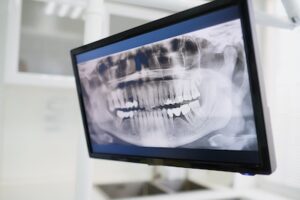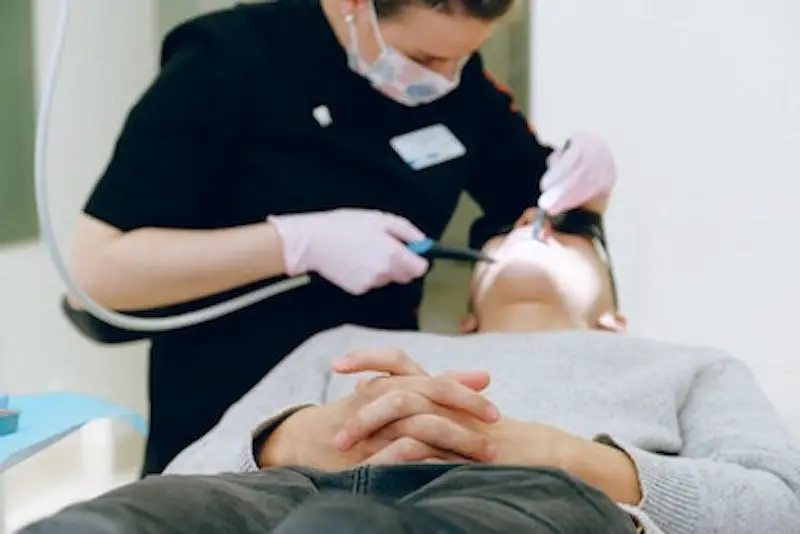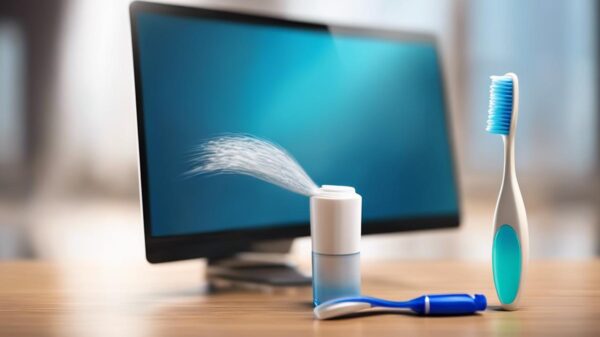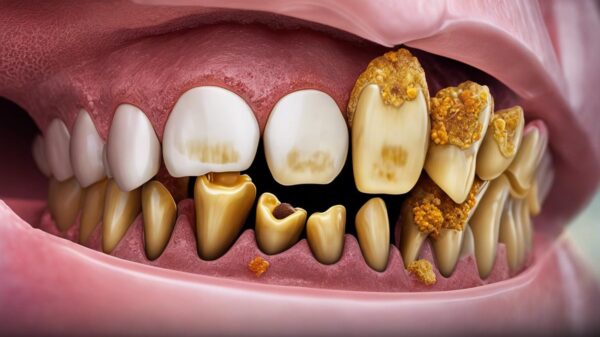Avoiding Common Dental Crown Problems
Dental crowns are dental restorations that completely cover a damaged or decayed tooth. Crowns provide dental patients with protection and improved dental function. They help prevent further damage to teeth and supporting structures. However, dental crown problems can occur when they are not placed properly.
It’s important to understand the common dental crown complications and how you can avoid them. In this article, you will learn about the top dental crown problems like fractured teeth, loose teeth, root canals, tooth fractures, tooth decay, unwanted metallic taste, and gum recession.
1. Fractured Teeth
Having your crown fractured is very common in a patient who grinds their teeth or clenches their jaws at night (bruxism). Patients with bruxism sometimes seek dental treatment for broken teeth and other dental problems, such as broken fillings and root canal treatments. This is due to constant grinding of the same area over time. At-home headgear is effective in managing bruxism.
2. Loosening Teeth
After dental crowns have been placed, patients usually experience a spike of pain or discomfort for the first few days. If dental crowns are not properly fitted and maintained, they can loosen teeth and cause dental problems such as chipped teeth and painful aches.
Using dental floss daily is essential to maintaining dental crowns. You should also brush your teeth twice a day, visit your dentist for routine dental checkups every six months, avoid grinding your teeth at night. Chewing sugarless gum, which has high amounts of calcium carbonate, can strengthen tooth enamel. Use an antibacterial mouth rinse that contains Chlorhexidine or Listerine to kill any unwanted bacteria.
3. Root Canal Problems
Crowns can place pressure on dental roots which can cause or worsen dental root problems. The dental crown is usually placed after the dental root has healed properly to prevent dental crown problems like this.
However, if dental root canal procedures are not performed correctly, dental crowns will not be able to support the tooth properly. It may fail prematurely.
To prevent dental crown problems, visit your dentist for regular dental checkups every 6 months. Brush your teeth twice a day with fluoride toothpaste. Floss at least once a day when you brush your teeth in the morning and before bedtime. Avoid eating sticky foods that may get stuck between teeth and under dental crowns.
Prevent dental cavities and dental restorations (fillings) that can cause dental decay and dental infections. Make sure to stay away from sugary food and drinks that may increase the possibility of dental cavities.
4. Tooth Fractures
Fractured teeth are very common among patients who grind their teeth at night (bruxism). Bruxism causes many dental fractures such as fractured fillings, crowns, or even broken teeth.
If you suspect a tooth fracture, be sure to see your dentist as soon as possible for an examination. Make sure to tell your dentist about any bruxism symptoms you experience. These may include headaches, neck aches, jaw pain during the day, or when eating/chewing gum.
Talk to your dental healthcare provider about dental appliances like dental nightguards that can help reduce bruxism during the day and at night.
5. Dental Decay Under Dental Crowns
 Dental crowns may not always cover dental cavities. This can result in dental root problems or dental infections under crowns that cause toothaches or bad breath.
Dental crowns may not always cover dental cavities. This can result in dental root problems or dental infections under crowns that cause toothaches or bad breath.
Poor oral hygiene is one of the most common causes of dental decay under dental crowns. To prevent dental decay, make sure you brush your teeth twice a day with fluoride toothpaste and floss at least once a day before brushing your teeth.
Use an antibacterial mouth rinse such as Listerine to kill dental bacteria and eat healthy foods that contain both calcium and vitamin D.
6. Infected Dental Crowns
Poor dental hygiene can cause dental crown problems like dental cavities, dental infections, or dental root abscesses that may lead to dental crown removal.
If dental crowns are not cleaned regularly, dental infections can develop under dental crowns for several reasons.
Some dental crowns may sit on top of dental implants or dental bridges which can cause problems by trapping food particles between the dental bridge or dental implant and the tooth. If you have an infected dental crown, be sure to see your dentist immediately.
7. Metallic Taste In Mouth
When high-purity alloys are used during dental crown fabrication, dental crowns can cause a metallic taste or bad taste. This is usually temporary and disappears in a few days.
If you experience this dental crown problem, avoid consuming hot or cold foods and drinks until your dental healthcare provider says it’s okay to do so. Avoid using dental appliances like dental braces/retainers until your dental healthcare provider says it is okay to brush your teeth, floss, or rinse with mouthwash.
8. Crown Loosening Due to Gum Recession
Gum recession causes crown loosening because the dental crown no longer has enough tooth structure supporting its placement onto the tooth. This
can be prevented by visiting your dentist for routine dental checkups every six months, as well as wearing a dental night guard while sleeping to prevent teeth from grinding. Avoid dental cavities and dental restorations that can cause dental decay. Use dental floss at least once a day before brushing your teeth in the morning and before bedtime.
How Long Does Receiving a Dental Crown Take?
 When dental crowns were first introduced, patients typically received them in just a few days. However, with increased dental advancements and increased patient expectation has come an increase in the number of dental visits needed for receiving dental crowns. The average time to receive one dental crown is about six weeks.
When dental crowns were first introduced, patients typically received them in just a few days. However, with increased dental advancements and increased patient expectation has come an increase in the number of dental visits needed for receiving dental crowns. The average time to receive one dental crown is about six weeks.
Six weeks might seem like a long time until you consider what your dental team must accomplish within that short period. They have to take molds of your teeth so they can create the dental restoration out of strong yet aesthetically pleasing porcelain material.
Then, there are anatomical considerations such as making sure the size and shape are appropriate so it will fit comfortably once bonded to your teeth. Plus, when dental crowns are being placed, the dentist must make sure they do not cause any damage to surrounding dental implants or remaining natural dental structures.
Generally speaking, dental crowns take about six weeks from start to finish for several reasons.
First Dental Visit
The first dental visit — which includes taking impressions and diagnostic imaging — takes an average of two hours. It also includes examining your mouth and discussing your desires for the outcome of the dental crown.
If another dental treatment is needed such as root canals, space maintainers, dental implants, or dental bridges it will be discussed on the first dental visit as well.
In-Between Dental Visits
In between dental visits you will need to be patient for your dental team to create a custom appliance that is meant just for you before they can begin bonding it onto your teeth. In most cases, there isn’t time allotted in one dental appointment to create a dental crown. This is especially true if other dental treatments are being performed at the same time.
During Dental Crown Procedure
On average it takes about 30 minutes from start to finish when placing dental crowns during a single office visit. It also includes adjustments and making sure it fits properly once bonded to your teeth.
This dental crown procedure does not include the first dental visit where diagnostic imaging is taken, impressions are made of your teeth, and any dental treatments like root canals or dental implants that may be performed at the same time.
After Dental Crown Procedure
Once you receive dental crowns, it will take an average of one week for them to settle into a position where they feel comfortable once again.
Subtracting this timeframe from six weeks brings us to the five weeks needed when you factor in the other dental procedures such as taking impressions, making a dental appliance, and performing the dental treatments.
How Long Until a New Dental Crown Feels Normal?
 How long it takes dental crowns to fit comfortably depends on several factors. These include the dental technician who is fitting them and also your lifestyle.
How long it takes dental crowns to fit comfortably depends on several factors. These include the dental technician who is fitting them and also your lifestyle.
For example, how often you eat hard foods or chew gum makes a difference in the length of time dental crowns feel normal.
Dental crowns start to feel unnoticeable usually between one and three weeks after you receive them. However, if dental crowns are extremely uncomfortable it may be because they aren’t fitting properly.
The length of time until dental crowns feel like your regular teeth will always depend on different factors. For example, the type of material used for dental crowns varies between different brands and specific models. Also, how long it takes for dental cement to “harden” dental crowns varies between dental lab technicians.
In Conclusion
The top dental crown problems can be avoided with good oral care. It is also important to find a dentist who is professional and skilled in this area. Be sure to brush your teeth morning and night. Doing so will ensure that you clean all bacteria from your teeth, preventing future tooth decay. The process of getting a new dental crown usually takes a few days. However, the dental crown itself lasts for years. Dental crowns are great options to help save your natural teeth and make them last longer!












